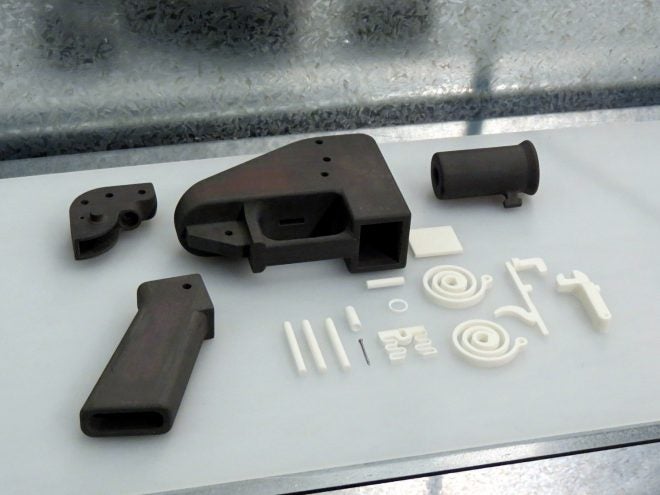In 2015 we reported that Defense Distributed had teamed up with the Second Amendment Foundation to sue the Department of State over the “Censorship of 3-D Printing Information”. Three years later it has emerged that Defense Distributed and the Second Amendment Foundation have been successful, winning their case and achieving a settlement with the government.
Back in 2013 Cody Wilson, through his site, Defense Distributed introduced the first almost entirely 3D printed firearm. The plans for the firearm, known as the Liberator, were downloaded from Defense Distributed’s website more than 100,000 times before the site was taken down. The pistol is extremely simple, made up of just 16 printed pieces/parts, however, having handled an example of one of Wilson’s early pattern 3D printed guns, they are quite fragile.
After just a week of the plans being online, the US State Department demanded Wilson take them down or face prosecution for breaking Federal export controls – International Trade in Arms Regulations (ITAR). Essentially he was accused of exporting firearms without a license to do so. In 2015 Defense Distributed worked with the Second Amendment Foundation to launch a lawsuit to combat the State Department’s claims.
In June a deal was reached promising to change ITAR laws surrounding firearms below .50 calibre, with the government agreeing that these weapons are not ‘inherently military’ in nature. A statement from the Second Amendment Foundations said that “The government has also agreed to pay a significant portion of the plaintiffs’ attorney’s fees, and to return $10,000 in State Department registration dues paid by Defense Distributed as a result of the prior restraint.”
In the statement from the Second Amendment Foundation, Executive Vice President Alan M. Gottlieb said:
Under this settlement the government will draft and pursue regulatory amendments that eliminate ITAR control over the technical information at the center of this case. They will transfer export jurisdiction to the Commerce Department, which does not impose prior restraint on public speech. That will allow Defense Distributed and SAF to publish information about 3-D technology.
The settlement will have interesting repercussions as Cody now plans to relaunch Defense Distributed’s website Defcad.com with an archive of blueprints for 3D printing. In 2014, 3D printing was a relatively expensive and widely unknown process but today 3D printers are increasingly affordable and ever more mainstream.
 Your Privacy Choices
Your Privacy Choices
